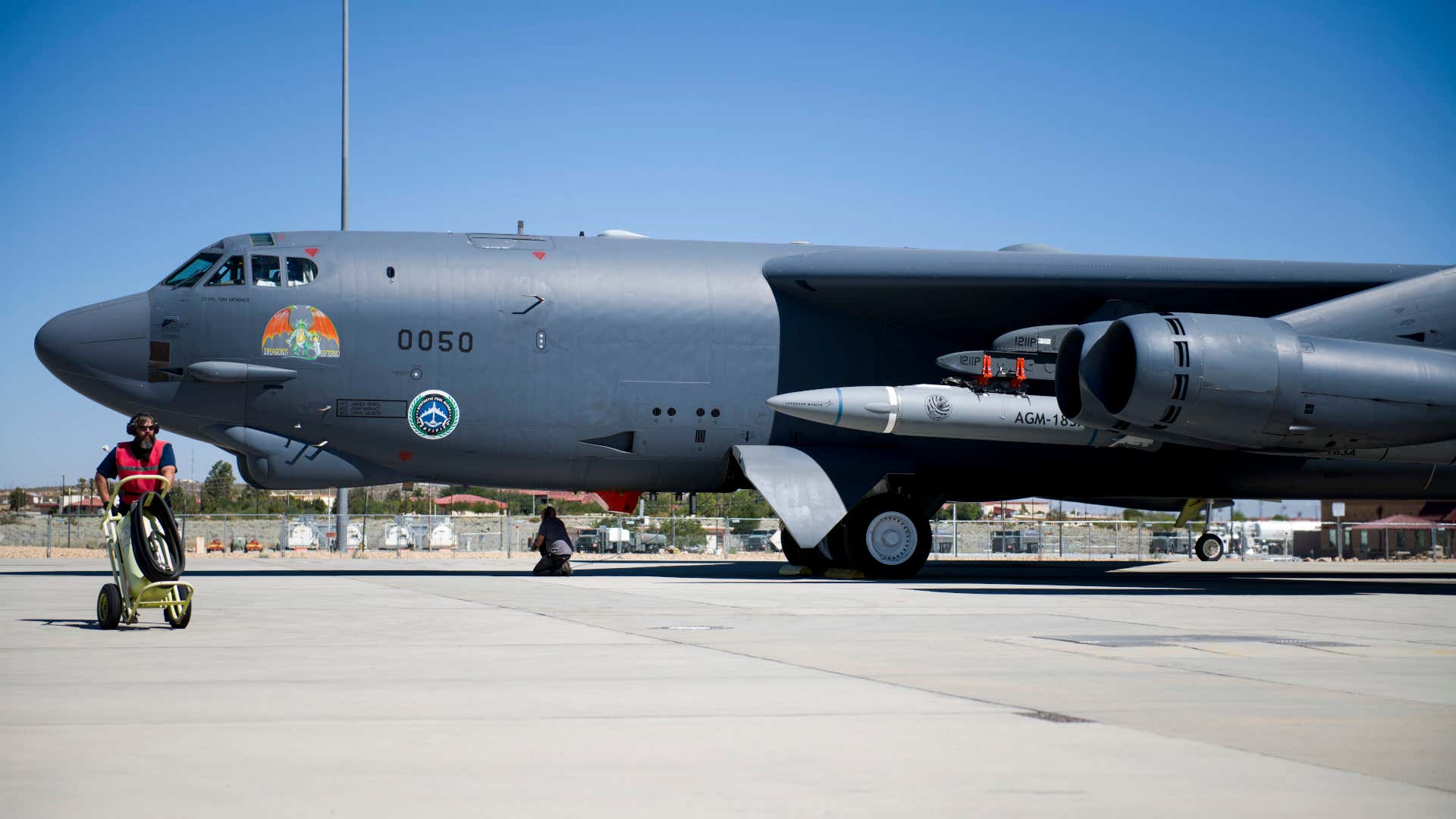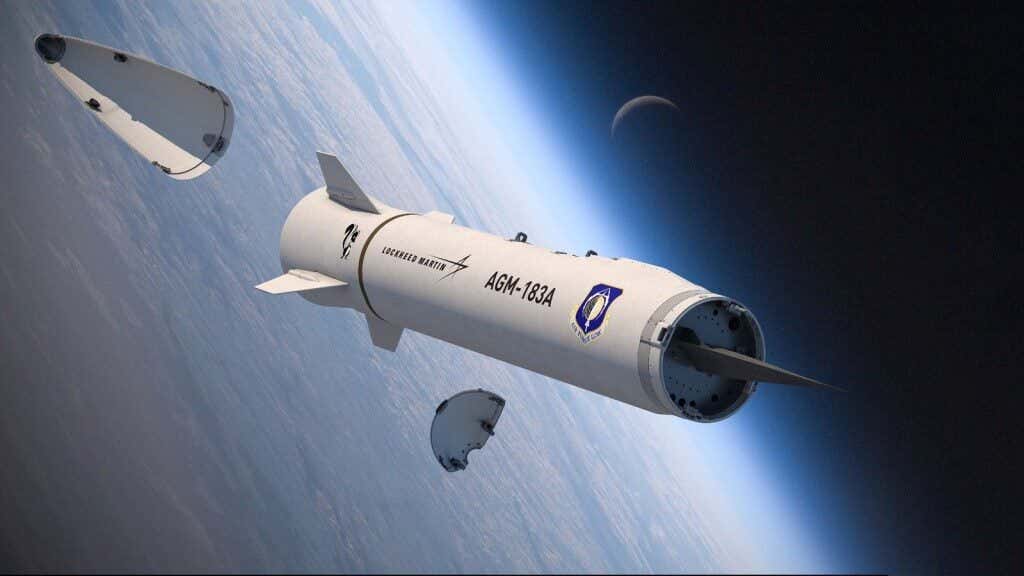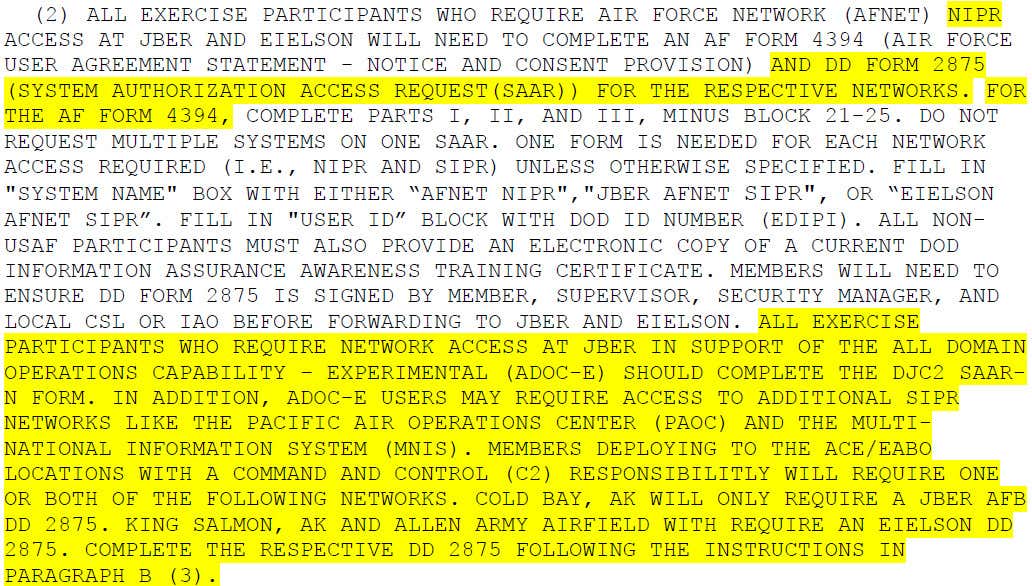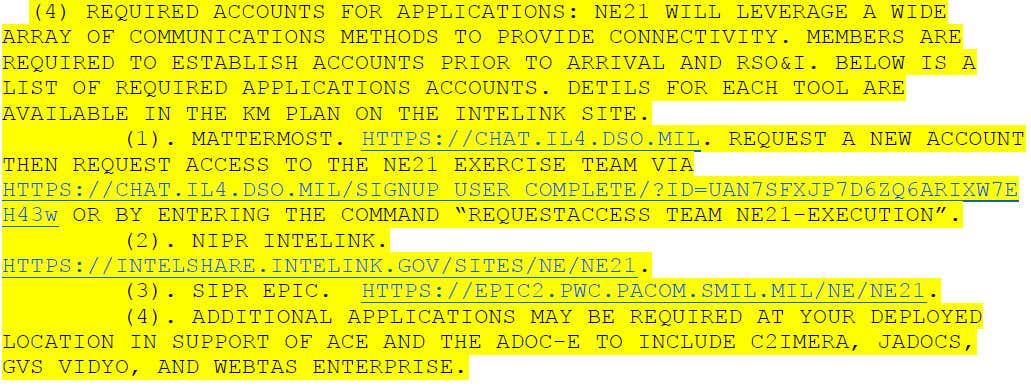
The Air Force touted its first end-to-end simulated hypersonic weapon strike, but new networking concepts that made it possible may be the real star.
The U.S. Air Force has yet to conduct a successful live-fire test of its new AGM-183A Air-launched Rapid Response Weapon, or ARRW, but says that it has now simulated the entire "kill chain" for employing one of these hypersonic missiles. With no actual weapon fired, the networks used to send the targeting information may be the more significant capability demonstrated here. This was all conducted during the biennial Northern Edge exercise, which began earlier this week in and around Alaska. Northern Edge exercises are routinely used to test and evaluate new systems and capabilities from across the U.S. military, with a special focus on advanced networking and communications concepts.
The mock ARRW launch took place on May 5, 2021, two days after Northern Edge 2021 kicked off. A B-52H Stratofortress bomber from the 49th Test and Evaluation Squadron, based at Barksdale Air Force Base in Louisiana, served as the launch platform, though no weapon was actually released. The designated target was 600 nautical miles from the bomber at the time of the simulated AGM-183A launch. The Air Force said that the test had been carried out "in the highly contested and realistic threat environment that Northern Edge provides."

A B-52H bomber with an AGM-183A captive carry test article under its wing during an earlier test.
It's unclear what other assets may have been directly involved in this particular part of the exercise, but the Air Force said that targeting information "from sensors" had been passed to the bomber via a command and control network centered at Joint Base Elmendorf-Richardson in Alaska. Various other air, naval, and ground elements from the U.S. Army, Navy, and Marine Corps are also taking part in Northern Edge, along with aircraft and personnel from multiple Air Force units.
“The team did an outstanding job effecting this event both in planning and execution," Air Force Lieutenant Colonel Matt Guasco, head of the 49th Test and Evaluation Squadron, said of the test. “This is a win for the USAF and greater DOD as a whole but make no mistake, we are just getting started.”
This simulated employment of an ARRW missile comes around a month after the failure of the first scheduled live-fire flight test of one of these weapons off the coast of southern California in April. It remains unclear exactly what happened during that abortive test, but the prototype AGM-183A never left the wing of the B-52H carrying it.
That failure also came after the Air Force had already pushed the date of that test back multiple times, having originally planned to carry it out before the end of 2020. The service has carried out a number of successful captive carry flight tests wherein instrumented ARRW test articles remain attached to the aircraft carrying them the entire time.
As designed, the complete ARRW weapon system consists of a large rocket booster with a payload section on top containing a single unpowered hypersonic boost-glide vehicle. After the missile reaches an optimal speed and altitude, the wedge-shaped boost-glide vehicle is released and then zooms back down along an atmospheric flight trajectory toward its target at hypersonic speed, defined as anything above Mach 5.
Boost-glide vehicles are also designed to be able to make very
unpredictable movements during their flight compared to traditional
ballistic missiles, even those with advanced maneuvering reentry
vehicles. This, together with their high speed, makes them very
well-suited to penetrating through dense enemy air and missile defenses
to strike time-sensitive or otherwise high-value targets on very short
notice. That, in turn, makes it very difficult for an opponent to react
at all, let alone try to defend themselves, even by seeking cover or
just trying to leave the target area. The Air Force has previously said
that ARRW will be able to hit targets 1,000 miles away in 12 minutes or less.

Concept art of ARRW pre-HBGV release.
This simulated AGM-183A launch at Northern Edge also follows controversial statements that Air Force General Timothy Ray, head of Air Force Global Strike Command, made as a guest on an edition of the Air Force Association's Mitchell Institute’s Aerospace Advantage podcast in March. Ray publicly criticized the Army's hypersonic weapons plans, especially with regards to potential future operations in the Pacific region, which touched off a series of events that eventually led to a meeting between the top uniformed officers from both services to smooth things over.
“I just think it’s a stupid idea to go and invest that kind of money that recreates something that the service has mastered and that we’re doing already right now," referring to the various kinds of long-range bomber missions that the Air Force routinely carries out. His position was that it would be easier to integrate hypersonic weapons, such as the AGM-183A, into those existing concepts of operations, and that the resulting capability would be more flexible and otherwise useful, compared to the Army's plans for utilizing its future ground-based Long Range Hypersonic Weapon. It is worth noting the Army, which is developing the LRHW in cooperation with the Navy, has successfully launched prototypes of that weapon more than once, including one test that involved actually striking a mock target.
Some have already questioned how significant this simulated shot of an AGM-183A might actually be in terms of the development of the weapon itself.
Still, if there is a debate about just how much of a "success" this was for the ARRW program, specifically, the data-sharing capabilities that were on display as part of this mock launch do seem to be very significant. “We were really exercising the data links that we needed in order to complete that kill chain loop, and then get the feedback to the players in the airspace that the simulated hypersonic missile was fired and effective," Air Force Lieutenant Colonel Joe Little, deputy commander of the 53rd Test Management Group, said in his own statement.
The 53rd Test Management Group is part of the 53rd Wing based at Eglin Air Force Base in Florida. The 49th Test and Evaluation Squadron is also assigned to 53rd Wing, despite being based at Barksdale.
The Air Force said that the targeting information that the B-52H received during this test had been relayed to the aircraft via the All-Domain Operations Capability-Experimental (ADOC-E) at Joint Base Elmendorf-Richardson. The Air Force has described the ADOC-E as an "operational-level 'blue' training audience designed to experiment with synchronizing joint functions in forward locations." This "allows the synchronization of joint functions in forward, contested environment when traditional C2 structure effectiveness is degraded or denied," the service added in its press release regarding the simulated AGM-183A launch.
It's not entirely clear how the ADOC-E functions or exactly how dispersed its nodes might be, but it is clearly a new kind of distributed command and control and data fusion ecosystem that the Air Force is experimenting with together with other branches of the U.S. military. A separate unclassified administrative document related to Northern Edge 2021 makes clear that additional ADOC-E functions are being carried out at forward locations that have been established for this exercise according to the Air Force's Agile Combat Employment (ACE) concept of operations, as well as the Marine Corps' Expeditionary Advance Base Operations (EABO) concept. You can read more about ACE and EABO, which are part of a growing push for more distributed operations across the U.S. military, as a whole, here and here.

A portion of the unclassified Northern Edge 2021 administrative document. The highlighted portions are from the original.
There are at least three outstations across Alaska, one at Allen Army Airfield, which serves the Army's Fort Greely, along with one in King Salmon and one in Cold Bay. Cold Bay is notably in the Aleutians, a strategic island chain that stretches out from mainland Alaska toward Russia, forming a boundary between the Bering Sea, to the north, and the Pacific Ocean, to the south. The importance of the Aleutians, as well as Alaska as a whole, has only increased in recent years as the U.S. military, as a whole, looks to expand its ability to respond to major contingencies and fight large-scale conflicts in the Pacific and Arctic regions."ADOC-E users may require access to additional SIPR [Secret Internet Protocol Router] networks like the Pacific Air Operations Center (PAOC) and the Multi-National Information System (MNIS)," the Northern Edge document says. Various other networks and related systems are also mentioned, including Deployable Joint Command and Control (DJC2), which offers SIPR, as well as Non-classified Internet Protocol (NIPR) and Joint Worldwide Intelligence Communication System (JWICS) access. There is also discussion about the use of the Leidos-developed Command and Control Incident Management Emergency Response Application (C2IMERA), Raytheon's Joint Automated Deep Operations Coordination System (JADOCS), VidyoWorks' Global Video Service (GVS), Intelligent Software Solutions WebTAS Enterprise, and the Mattermost online chat service.
 Some of the specific networking capabilities being employed during Northern Edge 2021, including as part of the ADOC-E.
Some of the specific networking capabilities being employed during Northern Edge 2021, including as part of the ADOC-E.
The potential flexibility that networks such as ADOC-E offer was on display in this particular demonstration, with the Air Force saying that the B-52H that carried out the mock ARRW strike was 1,000 nautical miles away from the Joint Base Elmendorf-Richardson at the time it simulated the launch of the weapon. This highlights how targeting information from a diverse array of offboard platforms could be fed to aircraft carrying hypersonic weapons, such as the AGM-183A, which could then prosecute those targets on short notice even if they are hundreds of miles away. This underscores the immense boost in stand-off strike capability that hypersonic weapons, in general, promise to give the U.S. military.
It's also worth noting that ADOC-E is also just one of a host of other command and control and data-fusion networking efforts that are presently ongoing across the U.S. military. This includes Air Force's Advanced Battle Management System (ABMS) initiative, the Army's Integrated Air and Missile Defense Battle Command System (IBCS), and what the Navy presently calls Project Overmatch. These all tie into a Department of Defense-wide effort, referred to as Joint All-Domain Command and Control (JADC2).
So, while the Air Force still hasn't conducted an actual live-fire flight test of the AGM-183A, the demonstration at Northern Edge this week highlights the all-new strike options that hypersonic weapons look set to provide for the U.S. military, as well as the significantly expanded data-sharing networks that will underpin those new capabilities.
Joseph Trevithick
No comments:
Post a Comment
Note: Only a member of this blog may post a comment.